Data Processing Method of Mine Wind Speed Monitoring Based on an Improved Fuzzy C-Means Clustering Algorithm
Abstract
1. Introduction
1.1. Research Motivation
1.2. Related Work
1.3. Necessity of Research Based on Challenges of the Literature
- Most traditional wind speed analysis is based on random prediction. In the field of mine ventilation, the wind speed is artificially controlled as a whole, therefore the study of wind speed should focus on the identification and location of noise data and analyze the degree of variation to provide a theoretical basis for mine ventilation workers to investigate safety hidden dangers;
- Although researchers have carried out much research on the calculation accuracy and speed of clustering in theory, in the engineering practice of mine ventilation, the clustering number means the overall fluctuation of air volume. Therefore, the most important thing is to select a reasonable method to determine the clustering number;
- In the field of mine ventilation, there is a specific relationship between random noise and the fluctuation of the overall state of air volume, therefore it is necessary to combine the two for analysis, not only to determine the location of the noise but also to obtain the information of the overall fluctuation of air volume and explain the possible implicit relationship between the two.
1.4. Novelty and Main Contributions
- According to the demand for mine intelligent construction and the engineering practice of mine ventilation, the wind speed processing methods in other engineering fields are compared and the analysis idea of mine wind speed data is put forward, which combines the local outliers with the overall air volume fluctuation;
- The robust local regression method is used to identify the preprocessing wind speed data, identify outliers, locate the abrupt data, and classify its risk for mine workers;
- The preprocessed wind speed data are clustered by fuzzy C-means clustering and the clustering validity function is introduced. The clustering number is determined through the analysis of separation degree and compactness and the corresponding ventilation state is analyzed;
- The clustering results after data preprocessing are compared with the origin. The clustering results and the implicit relationship between noise data and clustering results are analyzed, which provides a theoretical basis for the further integration of the two.
2. Principle of FCM Clustering Algorithm Based on Local Regression Feature
2.1. Robust Local Regression
2.2. Cluster Validity Function
2.3. FCM Clustering Algorithm
- J—objective function;
- ci—Class i sample data center;
- m—membership factor, which represents the sample’s degree of ease, is generally 2;
- —Euclidean distance from the sample to the center .
2.4. Process of Local Regression FCM Algorithm
3. Results
3.1. Data Sources
3.2. Data Preprocessing Results
3.3. Wind Speed State Fluctuation Results
4. Discussion
4.1. Data Preprocessing
4.2. Fuzzy Clustering
4.3. Analysis of the Relationship between Preprocessing and Clustering Results
5. Conclusions and Future Works
- We will analyze the data anomalies caused by different kinds of random variables, find the differences and relationships between them, and make a risk classification comparison table of various random variables, which provides a theoretical basis for checking the hidden dangers of the mine ventilation systems;
- The uncertainty and sensitivity of parameters such as window width and weighted multiple in data preprocessing will be analyzed to solve the problems of data preprocessing failure and clustering errors in extreme cases;
- According to the clustering results of this paper, the monitoring data of the mine will be deduced globally according to the law of air volume balance, which provides a theoretical basis for the intelligent ventilation of the mine.
Author Contributions
Funding
Institutional Review Board Statement
Informed Consent Statement
Data Availability Statement
Conflicts of Interest
References
- Zhang, Y.F.; Chen, B.L.; Liu, X.; Tang, Y. Path planning for an intelligent coal mine monitoring system based on artificial neural network. Sens. World 2016, 10, 31–33. [Google Scholar]
- Cheng, J.; Yang, S. Data mining applications in evaluating mine ventilation system. Saf. Sci. 2012, 50, 918–922. [Google Scholar] [CrossRef]
- Yan, Z.; Wang, Y.; Fan, J. Research on Safety Subregion Partition Method and Characterization for Coal Mine Ventilation System. Math. Probl. Eng. 2021, 2021, 1–11. [Google Scholar] [CrossRef]
- Dong, L.; Sun, D.; Han, G.; Li, X.; Hu, Q.; Shu, L. Velocity-free Localization of Autonomous Driverless Vehicles in Underground Intelligent Mines. IEEE Trans. Veh. Technol. 2020, 69, 9292–9303. [Google Scholar] [CrossRef]
- Deng, Q.; Liu, H.; He, Y.; Huang, T.; Zhou, H.; Bao, Y. Uniformity and Energy Evaluation of Equal Cross-section Ventilation System (ECVS) for Long Tunnel in Underground buildings. Energy Built Environ. 2022, 3, 86–94. [Google Scholar] [CrossRef]
- Arai, K.; Seto, K. Data fusion method for Earth Observation Satellite Data based on Wavelet MRA. Dtsch. Med. Wochenschr. 2006, 22, 233–236. [Google Scholar]
- Xu, Z.; Hu, Q.; Ehsani, M. Estimation of Effective Wind Speed for Fixed-Speed Wind Turbines Based on Frequency Domain Data Fusion. IEEE Trans. Sustain. Energy 2012, 3, 57–64. [Google Scholar] [CrossRef]
- Gharehchopogh, F.S.; Namazi, M.; Ebrahimi, L.; Abdollahzadeh, B. Advances in Sparrow Search Algorithm: A Comprehensive Survey. Arch. Comput. Methods Eng. 2022. [Google Scholar] [CrossRef]
- Wang, S.; Wang, J.; Lu, H.; Zhao, W. A novel combined model for wind speed prediction—Combination of Linear Model, Shallow Neural Networks, and Deep learning Approaches. Energy 2021, 234, 121275. [Google Scholar] [CrossRef]
- Gharehchopogh, F.S. Advances in Tree Seed Algorithm: A Comprehensive Survey. Arch. Comput. Methods Eng. 2022, 29, 3281–3304. [Google Scholar] [CrossRef]
- Wang, H.R.; Li, R.; Xie, W.; Hao, J.J. The Research of Multi-Sensor Data Fusion for Medical Image Based on Weighted Least Square Method. Basic Clin. Pharmacol. Toxicol. 2016, 118, 30. [Google Scholar]
- Paggi, H.; Soriano, J.; Lara, J.A. A Multi-Agent System for Minimizing Information Indeterminacy within Information Fusion Scenarios in Peer-to-Peer Networks with Limited Resources. Inf. Sci. 2018, 451–452, S1914198481. [Google Scholar] [CrossRef]
- Barbounis, T.G.; Theocharis, J.B.; Alexiadis, M.C.; Dokopoulos, P.S. Long-Term Wind Speed and Power Forecasting Using Local Recurrent Neural Network Models. IEEE Trans. Energy Convers. 2006, 21, 273–284. [Google Scholar] [CrossRef]
- Damousis, I.G.; Alexiadis, M.C.; Theocharis, J.B.; Dokopoulos, P.S. A fuzzy model for wind speed prediction and power generation in wind parks using spatial correlation. IEEE Trans. Energy Convers. 2004, 19, 352–361. [Google Scholar] [CrossRef]
- Altan, A.; Karasu, S.; Zio, E. A new hybrid model for wind speed forecasting combining long short-term memory neural network, decomposition methods and grey wolf optimizer. Appl. Soft Comput. 2021, 100, 106996. [Google Scholar] [CrossRef]
- Wu, C.; Wang, J.; Chen, X.; Du, P.; Yang, W. A novel hybrid system based on multi-objective optimization for wind speed forecasting. Renew. Energy 2020, 146, 149–165. [Google Scholar] [CrossRef]
- Karasu, S.; Altan, A.; Sara, Z.; Hacioglu, R. Estimation of Fast Varied Wind Speed based on NARX Neural Network by using Curve Fitting. Int. J. Energy Appl. Technol. 2017, 4, 137–146. [Google Scholar]
- Wang, Y.; Wang, J.; Li, Z.; Yang, H.; Li, H. Design of a combined system based on two-stage data preprocessing and multi-objective optimization for wind speed prediction. Energy 2021, 231, 121125. [Google Scholar] [CrossRef]
- Ying, N.A.; Ni, L.B.; Jw, C. Ultra-short-term wind-speed bi-forecasting system via artificial intelligence and a double-forecasting scheme. Appl. Energy 2021, 301, 117452. [Google Scholar]
- Lowndes, I.S.; Fogarty, T.; Yang, Z.Y. The application of genetic algorithms to optimise the performance of a mine ventilation network: The influence of coding method and population size. Soft Comput. 2005, 9, 493–506. [Google Scholar] [CrossRef]
- Dembele, D.; Kastner, P. Fuzzy C-means method for clustering microarray data. Bioinformatics 2003, 19, 973–980. [Google Scholar] [CrossRef] [PubMed]
- Chi, Y.; Jing, L. Reconstructing gene regulatory networks with a memetic-neural hybrid based on fuzzy cognitive maps. Nat. Comput. 2019, 18, 301–312. [Google Scholar] [CrossRef]
- Zhou, J.; Chen, C.P.; Chen, L.; Li, H.X. A Collaborative Fuzzy Clustering Algorithm in Distributed Network Environments. IEEE Trans. Fuzzy Syst. 2013, 22, 1443–1456. [Google Scholar] [CrossRef]
- Li, M.; Wang, Y.; Sun, Q.; Liu, Y. Research of ASW-FCM-Based Algorithm for Clustered Wind Turbine Group Equivalent Modeling. J. Electr. Eng. Technol. 2020, 15, 1555–1566. [Google Scholar] [CrossRef]
- Ghafori, S.; Gharehchopogh, F.S. Advances in Spotted Hyena Optimizer: A Comprehensive Survey. Arch. Comput. Methods Eng. 2021, 29, 1569–1590. [Google Scholar] [CrossRef]
- Yuan, Z.; Chen, H.; Li, T.; Sang, B.; Wang, S. Outlier Detection Based on Fuzzy Rough Granules in Mixed Attribute Data. IEEE Trans. Cybern. 2021, 52, 8399–8412. [Google Scholar] [CrossRef]
- Choi, Y.; Hanrahan, L.P.; Norton, D.; Zhao, Y.-Q. Simultaneous spatial smoothing and outlier detection using penalized regression, with application to childhood obesity surveillance from electronic health records. Biometrics 2020, 78, 324–336. [Google Scholar] [CrossRef]
- Gharehchopogh, F.S. An Improved Tunicate Swarm Algorithm with Best-random Mutation Strategy for Global Optimization Problems. J. Bionic Eng. 2022, 19, 1177–1202. [Google Scholar] [CrossRef]
- Gharehchopogh, F.S.; Shayanfar, H.; Gholizadeh, H. A comprehensive survey on symbiotic organisms search algorithms. Artif. Intell. Rev. 2020, 53, 2265–2312. [Google Scholar] [CrossRef]
- Lan, T.; Liu, J.; Qin, H.; Xu, L.L. Time-domain global similarity method for automatic data cleaning for multi-channel measurement systems in magnetic confinement fusion devices. Comput. Phys. Commun. 2019, 234, 159–166. [Google Scholar] [CrossRef]
- Li, C.; Lan, T.; Wang, Y.; Liu, J.; Xie, J.; Li, H.; Qin, H. An Automatic Data Cleaning Procedure for Electron Cyclotron Emission Imaging on EAST Tokamak Using Machine Learning Algorithm. J. Instrum. 2018, 13, P10029. [Google Scholar] [CrossRef]
- Gharehchopogh, F.S.; Gholizadeh, H. A comprehensive survey: Whale Optimization Algorithm and its applications. Swarm Evol. Comput. 2019, 48, 1–24. [Google Scholar] [CrossRef]
- Bose, A.; Mali, K. Type-reduced vague possibilistic fuzzy clustering for medical images. Pattern Recognit. 2021, 112, 107784. [Google Scholar] [CrossRef]
- Durgarao, N.; Sudhavani, G. Diagnosing skin cancer via C-means segmentation with enhanced fuzzy optimization. IET Image Process. 2021, 15, 2266–2280. [Google Scholar] [CrossRef]
- Fraiman, R.; Ghattas, B.; Svarc, M. Interpretable clustering using unsupervised binary trees. Adv. Data Anal. Classif. 2013, 7, 125–145. [Google Scholar] [CrossRef]
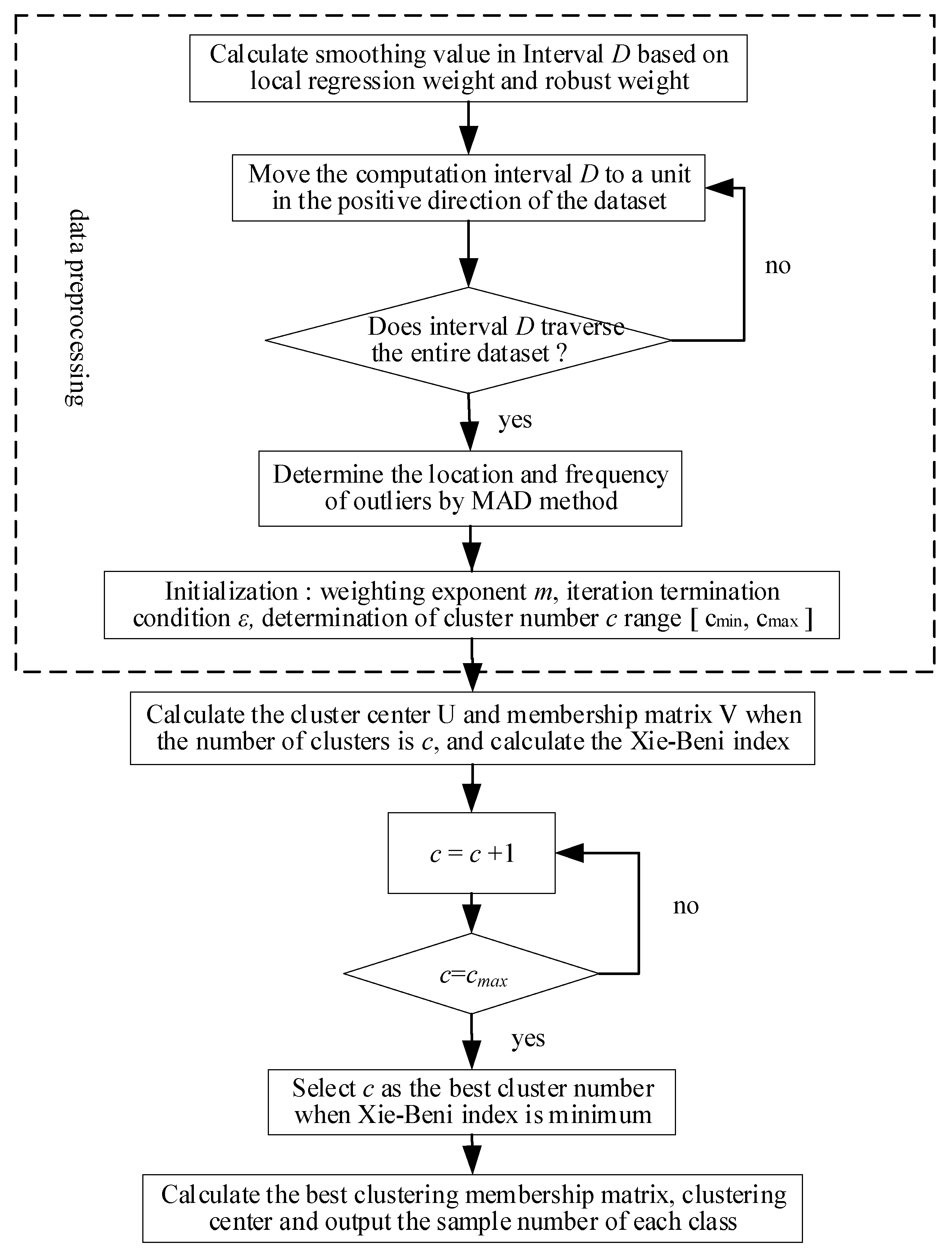
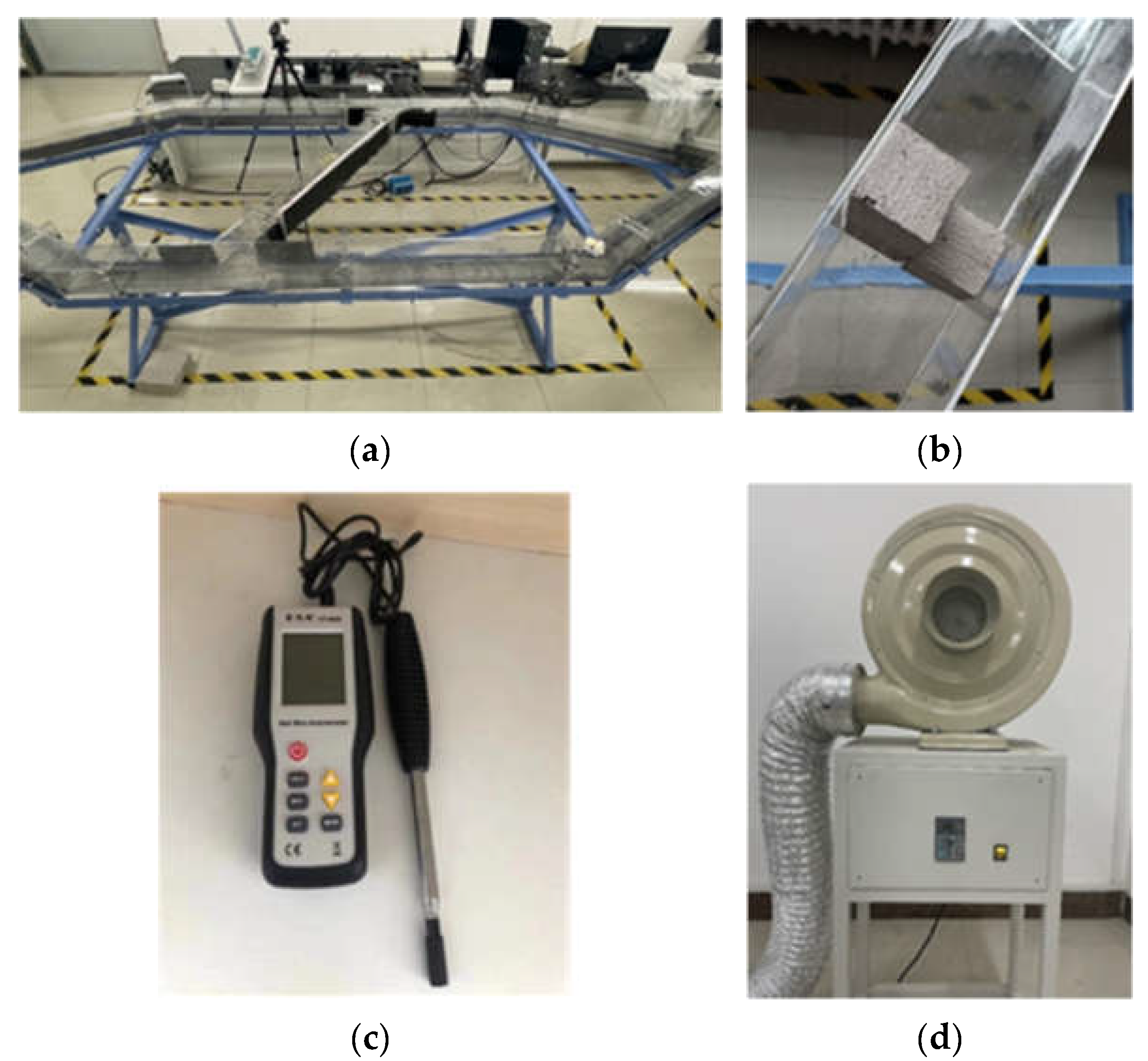
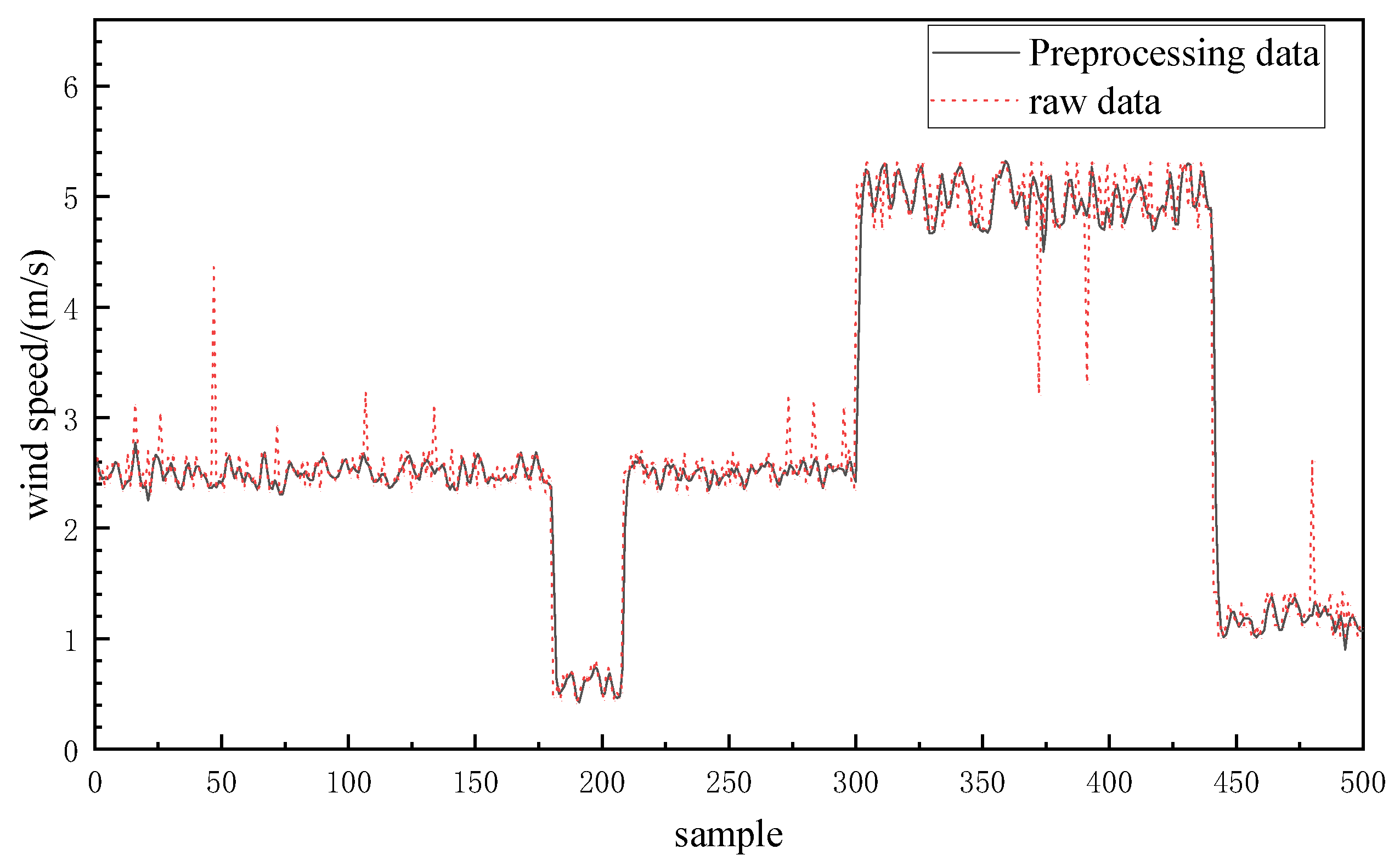

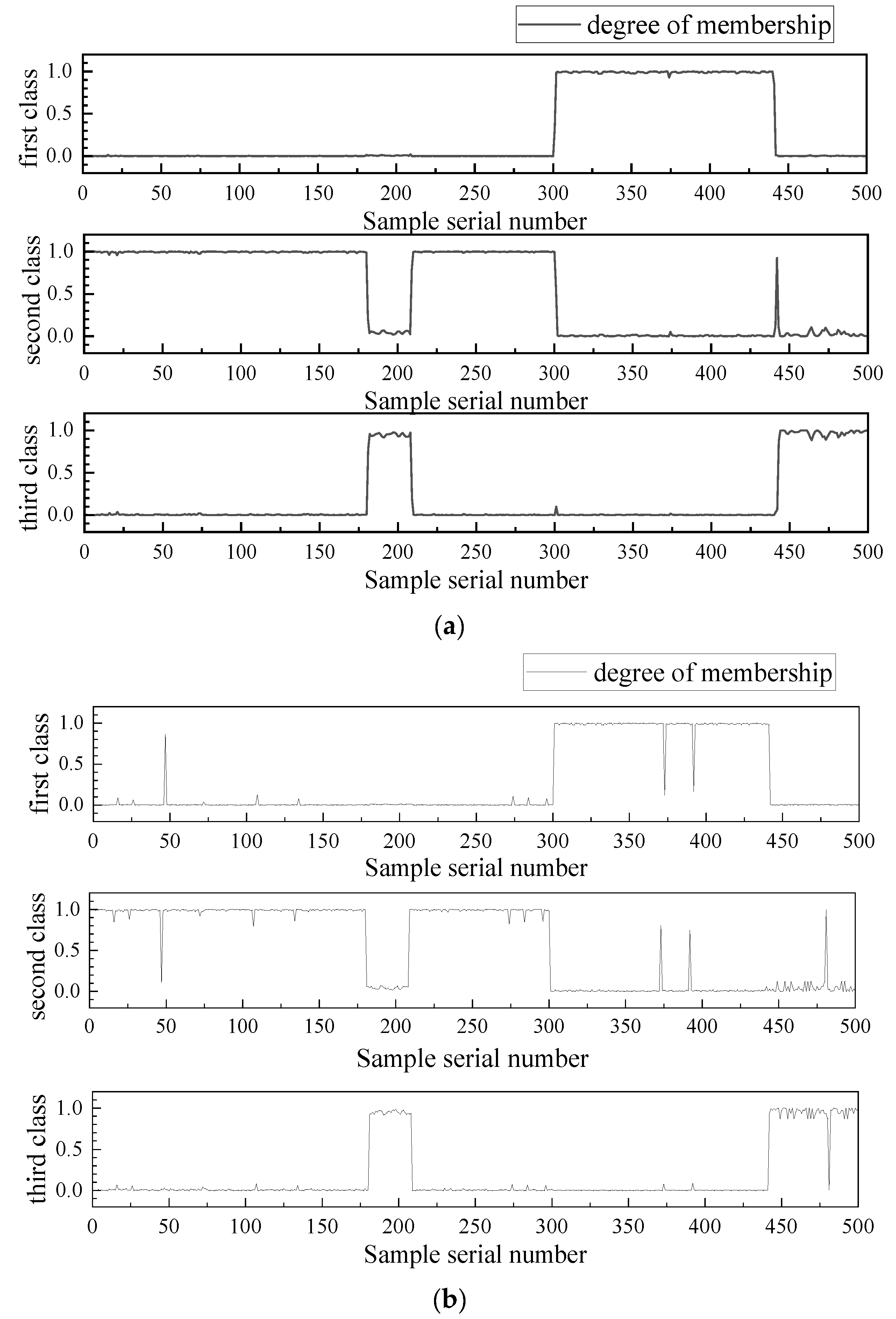
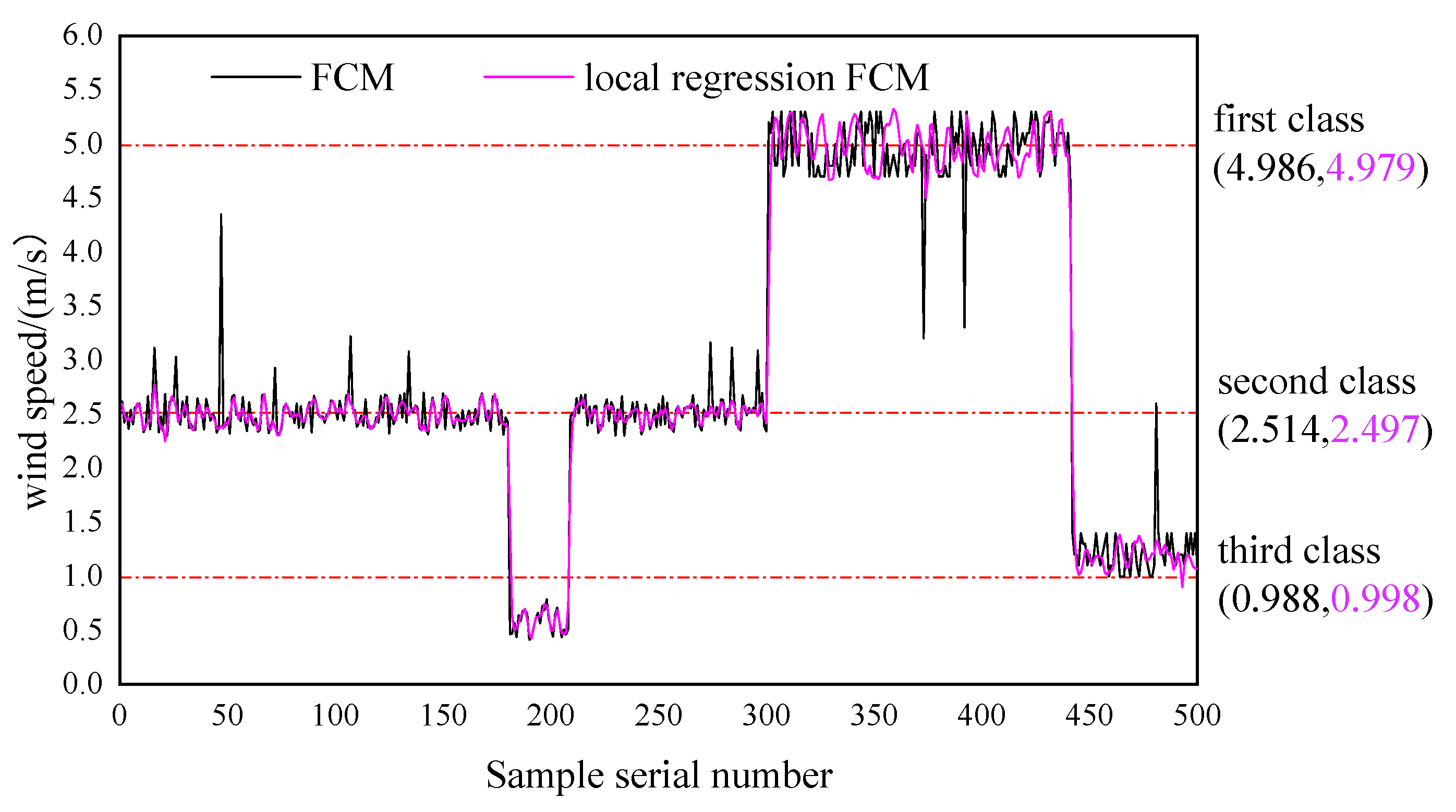
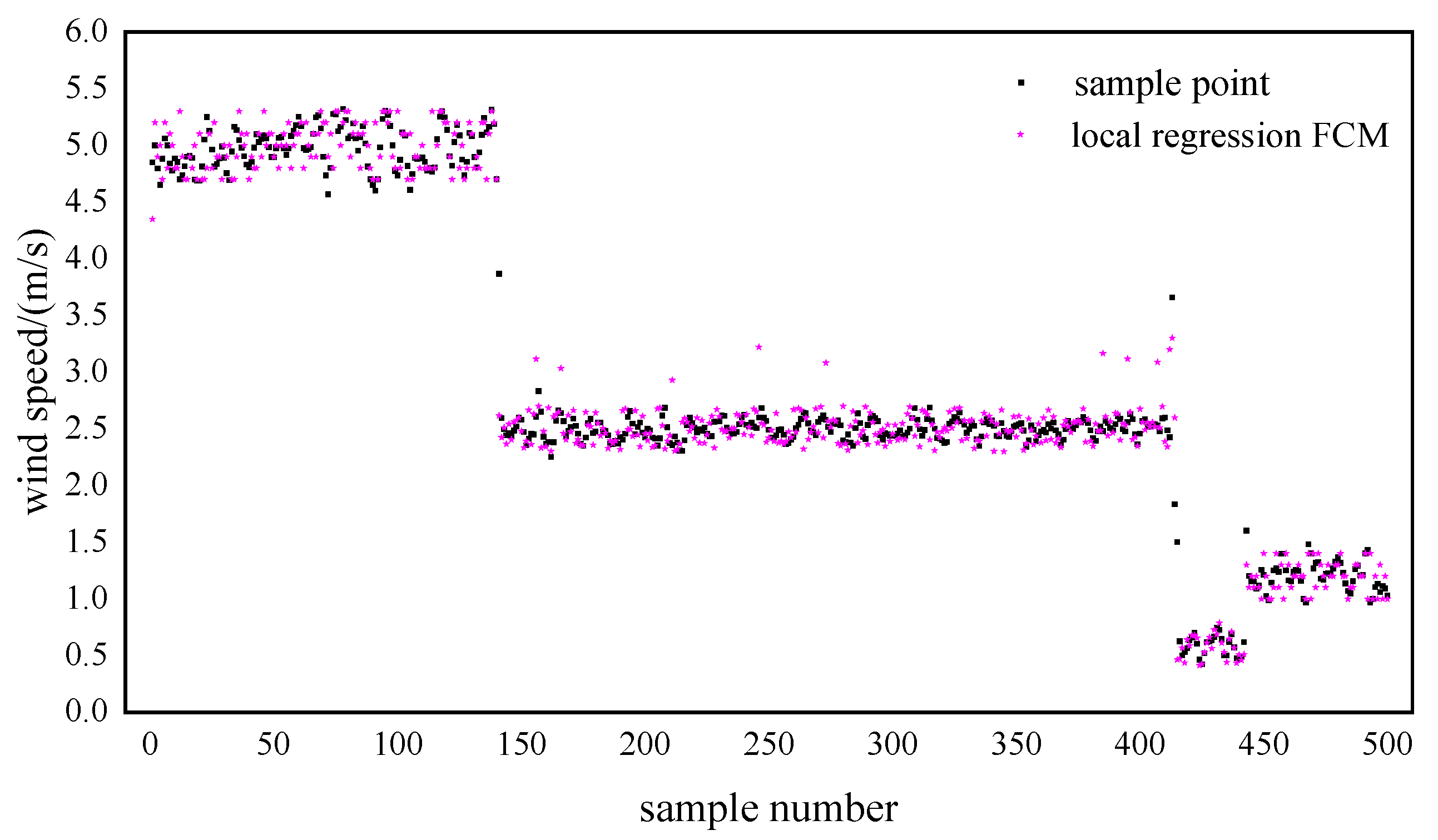
| No. | Values/(m/s) | No. | Values/(m/s) | No. | Values/(m/s) | No. | Values/(m/s) | No. | Values/(m/s) |
|---|---|---|---|---|---|---|---|---|---|
| (1) | 2.62 | (111) | 2.42 | (171) | 2.53 | (231) | 2.54 | (491) | 1.21 |
| (2) | 2.42 | (112) | 2.49 | (172) | 2.34 | (232) | 2.45 | (492) | 1.01 |
| (3) | 2.51 | (113) | 2.39 | (173) | 2.66 | (233) | 2.67 | (493) | 1.40 |
| (4) | 2.37 | (114) | 2.64 | (174) | 2.65 | (234) | 2.30 | (494) | 1.29 |
| (5) | 2.54 | (115) | 2.38 | (175) | 2.63 | (235) | 2.48 | (495) | 1.38 |
| (6) | 2.41 | (116) | 2.39 | (176) | 2.40 | (236) | 2.47 | (496) | 1.38 |
| (7) | 2.56 | (117) | 2.37 | (177) | 2.54 | (237) | 2.48 | (497) | 1.37 |
| (8) | 2.58 | (118) | 2.39 | (178) | 2.31 | (238) | 2.61 | (498) | 1.32 |
| (9) | 2.60 | (119) | 2.47 | (179) | 2.47 | (239) | 2.43 | (499) | 1.29 |
| … | … | … | … | … | … | … | … | (500) | 1.05 |
| No. | Values/(m/s) | Times | Risk | No. | Values/(m/s) | Times | Risk |
|---|---|---|---|---|---|---|---|
| 26 | 3.03 | 3 | low | 442 | 1.10 | 3 | low |
| 72 | 2.93 | 3 | 107 | 3.22 | 4 | medium | |
| 134 | 3.08 | 3 | 296 | 3.09 | 4 | ||
| 180 | 2.43 | 3 | 461 | 1.11 | 4 | ||
| 181 | 0.46 | 3 | 466 | 1.29 | 4 | ||
| 208 | 0.51 | 3 | 114 | 2.64 | 5 | ||
| 209 | 2.48 | 3 | 462 | 1.01 | 5 | ||
| 252 | 2.67 | 3 | 392 | 3.29 | 6 | high | |
| 261 | 2.47 | 3 | 481 | 2.61 | 6 | ||
| 266 | 2.68 | 3 | 47 | 4.35 | 7 | ||
| 267 | 2.38 | 3 | 274 | 3.16 | 7 | ||
| 301 | 5.21 | 3 | 373 | 3.20 | 7 | ||
| 441 | 4.71 | 3 | — | — | — | — |
Publisher’s Note: MDPI stays neutral with regard to jurisdictional claims in published maps and institutional affiliations. |
© 2022 by the authors. Licensee MDPI, Basel, Switzerland. This article is an open access article distributed under the terms and conditions of the Creative Commons Attribution (CC BY) license (https://creativecommons.org/licenses/by/4.0/).
Share and Cite
Zhang, W.; Li, Y.; Li, J. Data Processing Method of Mine Wind Speed Monitoring Based on an Improved Fuzzy C-Means Clustering Algorithm. Appl. Sci. 2022, 12, 9701. https://doi.org/10.3390/app12199701
Zhang W, Li Y, Li J. Data Processing Method of Mine Wind Speed Monitoring Based on an Improved Fuzzy C-Means Clustering Algorithm. Applied Sciences. 2022; 12(19):9701. https://doi.org/10.3390/app12199701
Chicago/Turabian StyleZhang, Wei, Yucheng Li, and Junqiao Li. 2022. "Data Processing Method of Mine Wind Speed Monitoring Based on an Improved Fuzzy C-Means Clustering Algorithm" Applied Sciences 12, no. 19: 9701. https://doi.org/10.3390/app12199701
APA StyleZhang, W., Li, Y., & Li, J. (2022). Data Processing Method of Mine Wind Speed Monitoring Based on an Improved Fuzzy C-Means Clustering Algorithm. Applied Sciences, 12(19), 9701. https://doi.org/10.3390/app12199701






